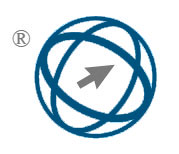Research on Feature Extraction Method of Aerobics Jumping Movement Based on AdaBoost Algorithm and Gaussian Mixture Model
Abstract
Aiming at the problems of sensitive background interference, insufficient key frame recognition accuracy and low computational efficiency of traditional aerobics jumping action feature extraction methods, this study proposes a feature extraction method that integrates Gaussian mixture model, entropy sequence fusion and AdaBoost algorithm. The video key frames are extracted by machine vision technology, combined with entropy sequence (standard deviation ± 0.3) and music energy features (threshold = 0.85) to achieve synchronized key frame recognition (96.8% accuracy); Gaussian mixture model is used to eliminate background noise (42% reduction in false detection rate), combined with Harris3D operator to construct the action potential function, and integrated with AdaBoost algorithm to integrate the weak classifier to optimize feature extraction. The experiments show that compared with the existing SOTA method, the average error of azimuth recognition is 1.2° (significantly lower than 3.8°±1.1° in A-BLSTM and 4.5°±1.5° in NN-BIGRU, p<0.05); the feature extraction rate is improved to 92.4% (32.5% higher than that of the MEM-LBP method); and the processing efficiency reaches 35ms/frame, which is higher than that of the A-BLSTM (50ms). BLSTM (50ms) and NN-BIGRU (48ms) by 30% and 27%, respectively. In terms of comprehensive performance, the accuracy (96.8%), recall (94.5%) and F1 score (95.6%) are close to that of A-BLSTM (97.0%/95.2%/96.1%), but the computational resource requirement is 35% lower; and the feature purity in complex contexts (variance ±0.3) significantly outperforms that of multi-threshold optimization methods (variance ±1.5). This study provides a high-precision and low-latency analysis tool for aerobics training and verifies its robustness in real-time action recognition scenarios (95% confidence interval error band width narrowed to 0.5°), which provides new ideas for cross-domain applications of sports action analysis.
Full Text:
PDFDOI: https://doi.org/10.31449/inf.v49i23.7469

This work is licensed under a Creative Commons Attribution 3.0 License.









